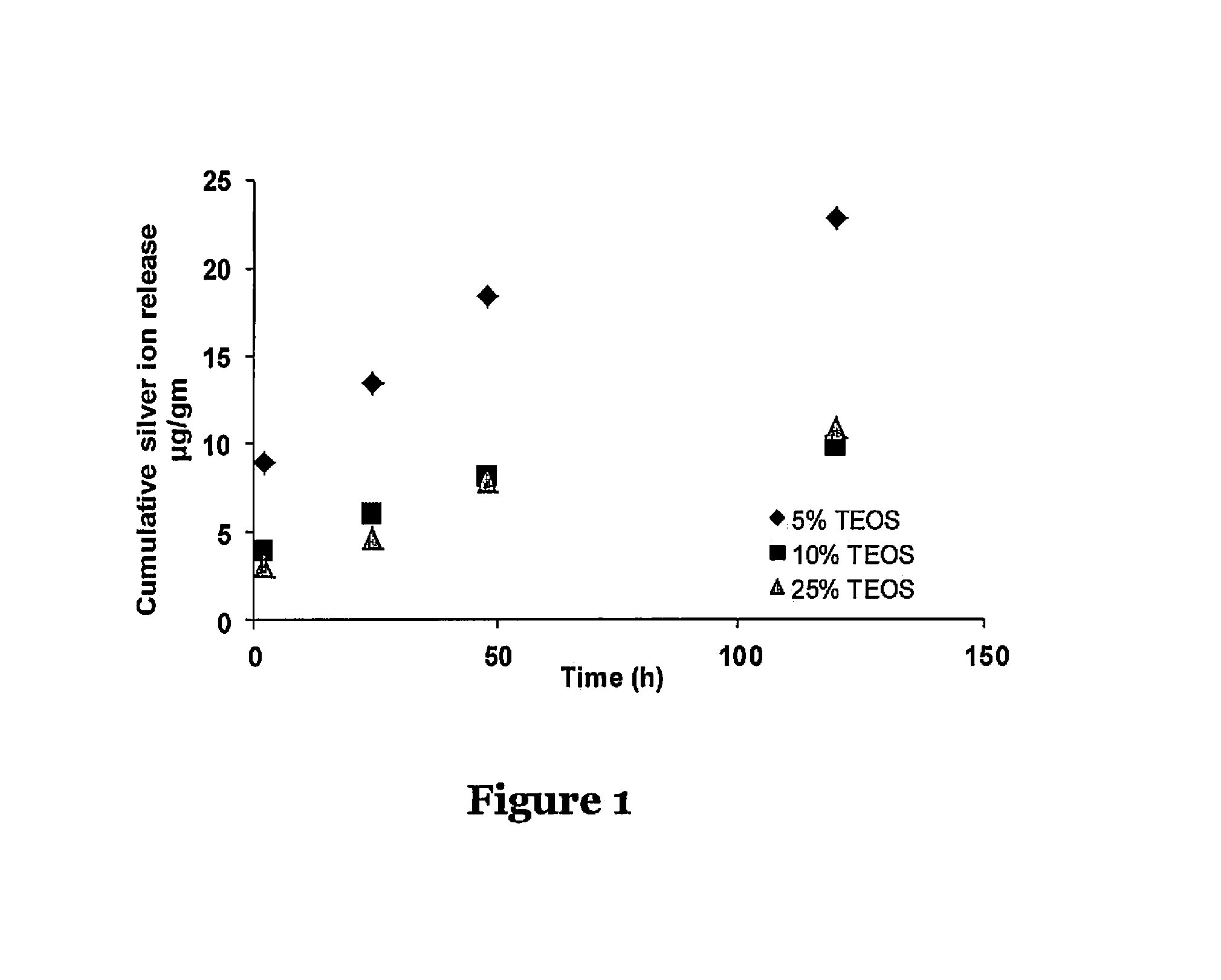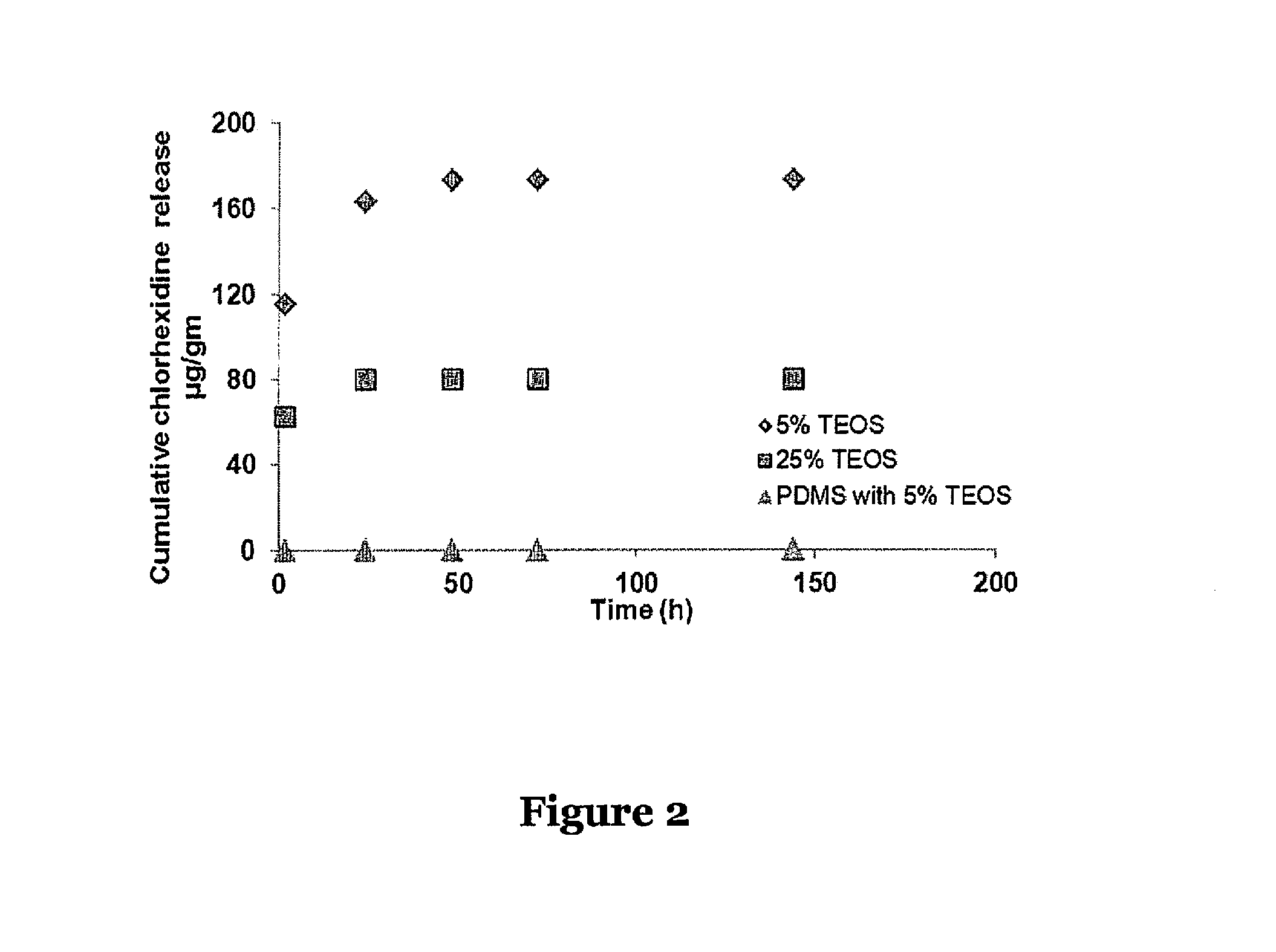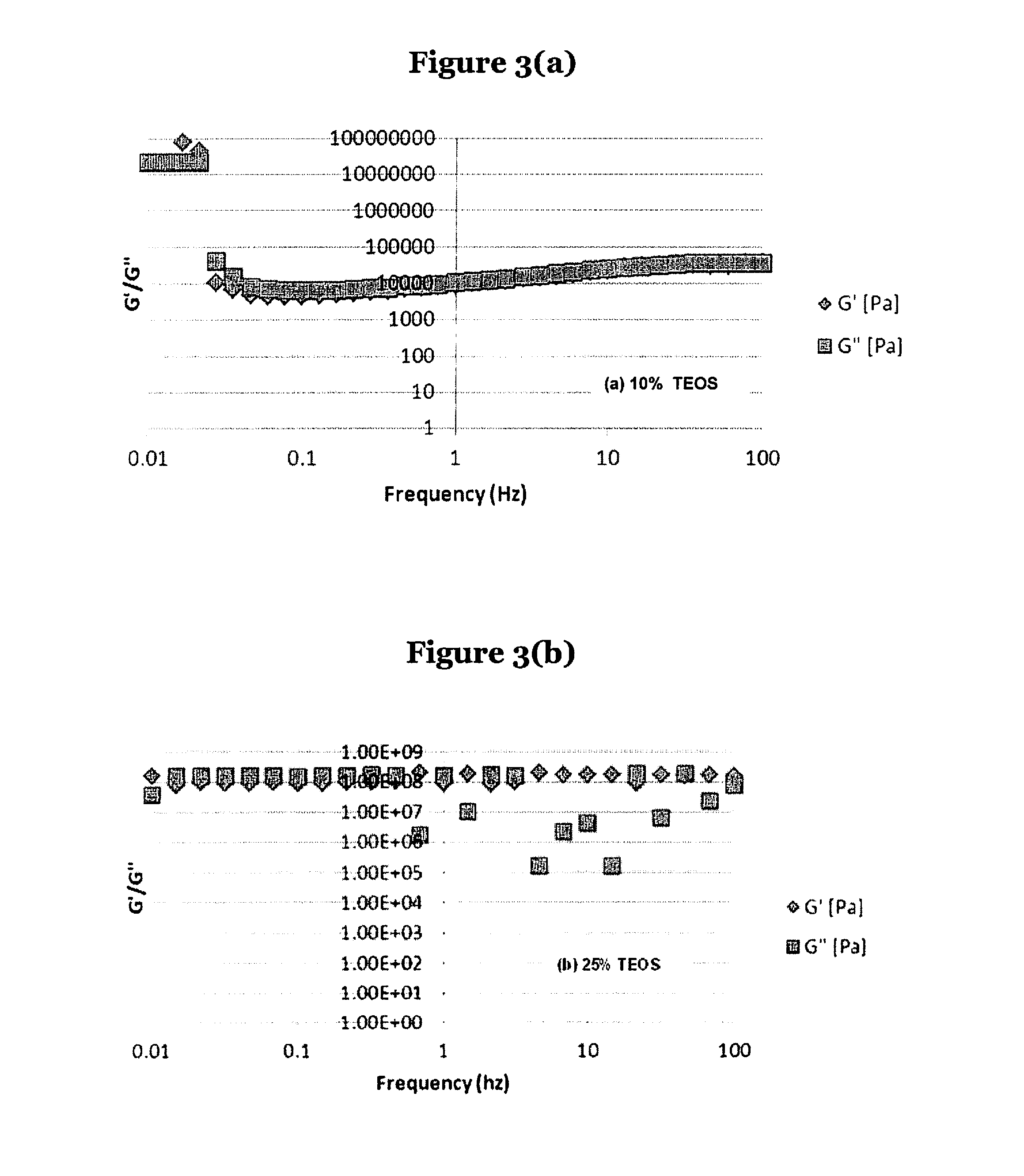Silicone adhesive compositions
a technology of silicone adhesives and compositions, applied in the field of adhesives, can solve the problems of reducing the water uptake of silicone adhesives, reducing the adhesion strength, and currently used silicone adhesives suffering from low moisture transport, so as to achieve low moisture transport, increase moisture permeability, and lack of hydrophilicity
- Summary
- Abstract
- Description
- Claims
- Application Information
AI Technical Summary
Benefits of technology
Problems solved by technology
Method used
Image
Examples
example 1
Synthesis of Sulfonated Ionic Silicone Bearing Terminal Vinyl Groups
[0116]A three necked 500 mL flask was charged with 70.08 g (60.0 mmol) alpha-methylstyrene and 10.0×10−4 g platinum catalyst. The temperature of the resulting mixture was brought to 115° C., then 30.0 g (120.5 mmol) 1,3,5,7-tetramethylcyclotetrasiloxane was added drop wise and continued to stir. The progress of the reaction mixture was monitored by 1H NMR. After 12 h of the reaction, complete conversion of silicone hydride was indicated by the NMR. Then, the reaction mixture was vacuum stripped at 150° C. for 2 h to remove unreacted alpha-methylstyrene which gave 80.5 g aralkylene substituted cyclotetrasiloxane. (Yield: (95%))
[0117]To 14.24 g (20.0 mmol) of the above aralkylene substituted cyclotetrasiloxane, 18.64 g (160.0 mmol) chlorosulfonic acid dissolved in 4.0 mL dichloromethane was added drop wise through a period of 30 minutes while the mixture being stirred at room temperature. The resulting mixture was con...
example 2
Synthesis of Sulfonated Ionic Silicone with End-Capped Sulfonate Groups
[0119]A three necked 500 mL flask was charged with 18.16 g (154.0 mmol) alpha-methylstyrene and 27.2×10−5 platinum catalyst. The temperature of the resulting mixture was brought to 115° C., then 9.40 g (70.0 mmol) 1,1,3,3 tetramethyldisiloxane was added drop wise and continued to stir until completion of the hydrosilylation reaction. The complete hydrosilylation was indicated by the disappearance of silicone hydride peak in the 1H NMR. The resulting mixture was vacuum stripped to remove unreacted alpha-methylstyrene by placing on an oil bath at 150° C. for 2 h which gave 23.2 g aralkylene substituted disiloxane.
[0120]To this aralkylene substituted disiloxane (23.2 g, 62.4 mmol), 29.6 g (252.8 mmol) of chlorosulfonic acid was added drop wise through a period of 30 minutes while the mixture being stirred at room temperature. The resulting mixture was continued to stir for additional 30 minutes. The completion of th...
example 3
Synthesis of Calcium Carbonate Functional Polyorganosiloxane
[0122]A 500 ml three necked round bottom flask was charged with 650 ml water and 184 g (3.27 M) potassium hydroxide. 164.2 g (1 M) eugenol was added and the solution was heated to 90° C. and stirred till the solution become clear. 154.34 g (1.6 M) chloroacetic acid was dissolved in 320 ml water and added to above solution at 90-95° C. in about 3-4 hr. The solution was further stirred for about 2 h at 90-95° C., cooled to 50° C., acidified with dilute HCl and filtered the precipitate to give the carboxylic acid functional eugenol. A 2 L round bottom flask was charged with 177.76 g (0.8 M) of above product, 136 g (0.8 M) Iodopropane and 148 g (0.8 M) tributylamine was added to 1000 ml toluene. The solution was heated to 90° C. and stirred for 6 h. The solution was cooled to room temperature and the precipitate was filtered. The filtrate was stripped off the solvent to get the propyl ester of carboxylated eugenol. A 500 ml thr...
PUM
| Property | Measurement | Unit |
|---|---|---|
| Adhesivity | aaaaa | aaaaa |
| Hydrophilicity | aaaaa | aaaaa |
| Hydrophobicity | aaaaa | aaaaa |
Abstract
Description
Claims
Application Information
 Login to View More
Login to View More - R&D
- Intellectual Property
- Life Sciences
- Materials
- Tech Scout
- Unparalleled Data Quality
- Higher Quality Content
- 60% Fewer Hallucinations
Browse by: Latest US Patents, China's latest patents, Technical Efficacy Thesaurus, Application Domain, Technology Topic, Popular Technical Reports.
© 2025 PatSnap. All rights reserved.Legal|Privacy policy|Modern Slavery Act Transparency Statement|Sitemap|About US| Contact US: help@patsnap.com



